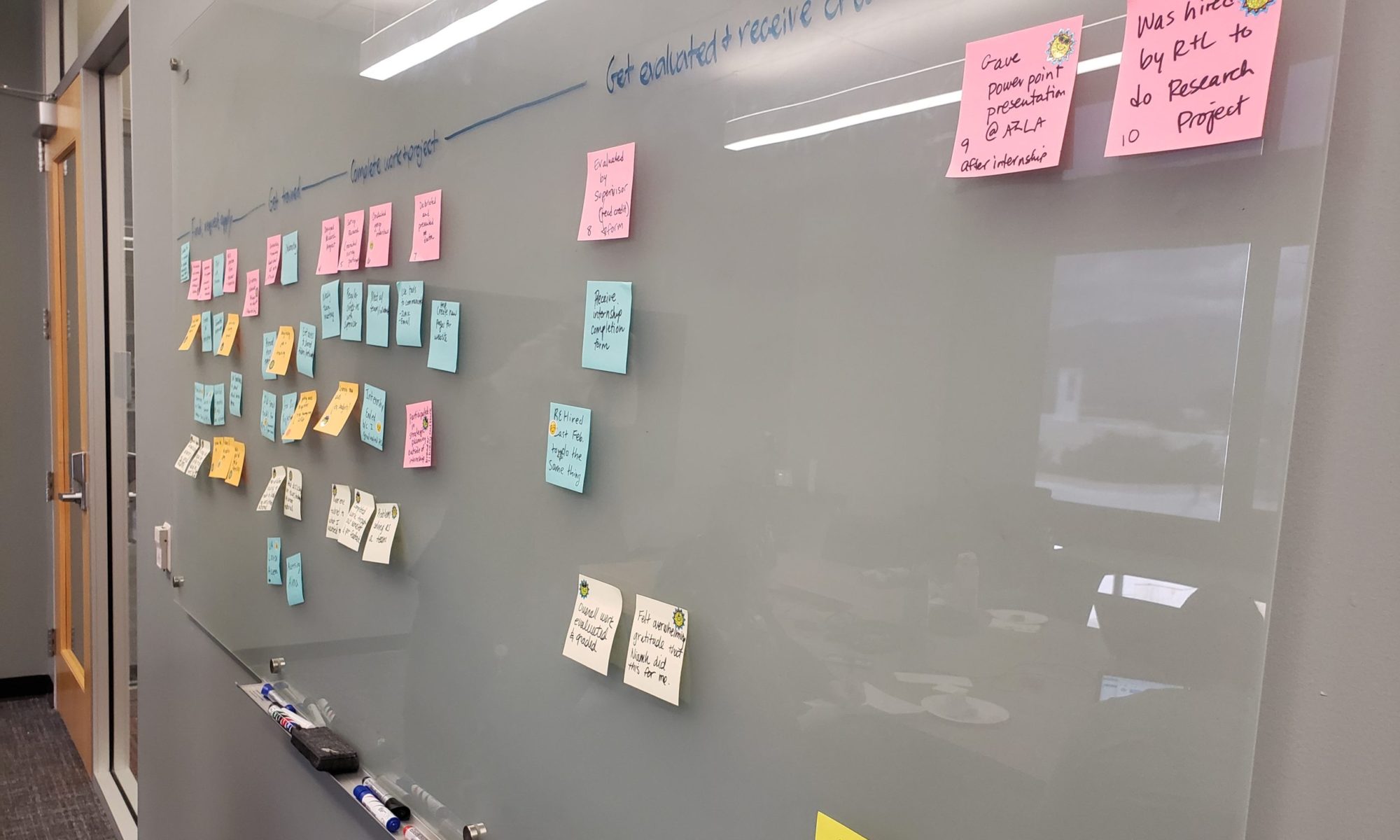I recently passed the 6 month mark in my new role at Ad Hoc. Unlike my previous organization (University of Arizona), Ad Hoc is a remote-first company, so employees are working from across the country. One of my fears was that I’d feel isolated or disconnected from my colleagues. Fortunately, that’s not at all the case!
Sharing 3 reflections on what I’ve observed that makes our remote environment effective: collaboration, cooperation, and connection.
Collaboration
Remote work doesn’t need to be isolated. Collaboration remains important to doing our best work, and we have the structures, tools, and culture that make this possible.
Effective asynchronous collaboration
- Our active Slack workspace is used company-wide, with close to a thousand Slack channels! I’m most active in those dedicated to my projects and practice areas, but I’ve also joined ones that have helped me connect with people outside my team – topics like ResearchOps, accessibility, and information architecture. We had Slack at my old workplace, but it was used inconsistently. It makes a big difference when it’s an active space and everyone is responsive. We rarely use emails.
- Project and task-tracking tools like Notion, Jira, and Trello can be incredibly helpful for collaborating on progress and getting feedback or support between meetings.
- I’ve posted before on the power of the virtual sticky note (tools like Mural, Miro, and Figjam). While often used during real-time meetings, my colleagues often use these for activities between and in preparation for meetings.

Effective synchronous collaboration
- We have real-time sync meetings regularly (daily or weekly, depending) where we share what we’re working on, align on priorities, and ask for support or feedback. While a lot can be done asynchronously, making decisions, giving each other feedback, and building on our ideas works best in real time.
- Our talented product managers and team leads facilitate structured activities like retrospectives, working agreements, and roadmapping that allow everyone to contribute and support constructive dialog on different topics.

Cooperation
Reliable cooperation within and between teams is essential.
Responsiveness
- Colleagues are almost always responsive to requests and questions over Slack. Quick questions can be answered quickly. And when not available, people are good at indicating that on Slack.
- People are good at following through on things, and when things slip, they are good at owning those things. We are supportive of one another and admitting mistakes or missteps is a common phenomenon.
Flexibility
- Not all conversations work well asynchronously, so when a real-time chat is better, Slack huddles allow this. This can replicate the over-the-cubicle conversations that are helpful in office environments.
- Being flexible and adaptive to others’ working style is important, since not everyone works the same way. We’ve had success using “readme” bios and teambuilding exercises to better understand each other’s styles and how we can support one another’s success.

Connection
Work is why we’re here, but it’s not all about work. Bringing our full selves to the workplace allows us to form relationships, foster trust, and make deeper connections.
Fun
- We have lots of fun channels on Slack, like #cooking, #pets, and #happyplace. We also have over 6k custom emojis allowing us to express ourselves in lots of ways.
- There are regular, opt-in socials for people who are interested. We have a West Coast Social monthly that helps build connections across teams, and our new program team just scheduled bi-weekly hangouts at the end of the day on Friday to reflect and unwind. I’ve also had one-on-one informal chats with mentors and peers, where there’s no agenda but a chance to get to know one another as a person.

Being human
- Most people have their cameras on during meetings. This can support stronger communication for sighted employees, since we can see non-verbal reactions and expressions. (Cameras go off are when people have connectivity issues, are cooking/eating, or for personal reasons, and they usually let others know when they need to do this).
- We’re a big company, recently surpassing the 500-employee mark. Our opt-in “Donut meetings” Slackbot allows us to meet up with a random colleague for a 30-minute chat. This has helped me feel connected to others, having conversations about everything from vegetarian cooking, to dog training, to immigration, while also broadening my understanding of the work we do.

In short, remote work environments can be collaborative places where you feel connected and supported as much as (or more than!) you might in an office environment. I was skeptical of remote work, but forced into it in March 2020 and then deciding to try it full-time last summer, I’m now a convert.
